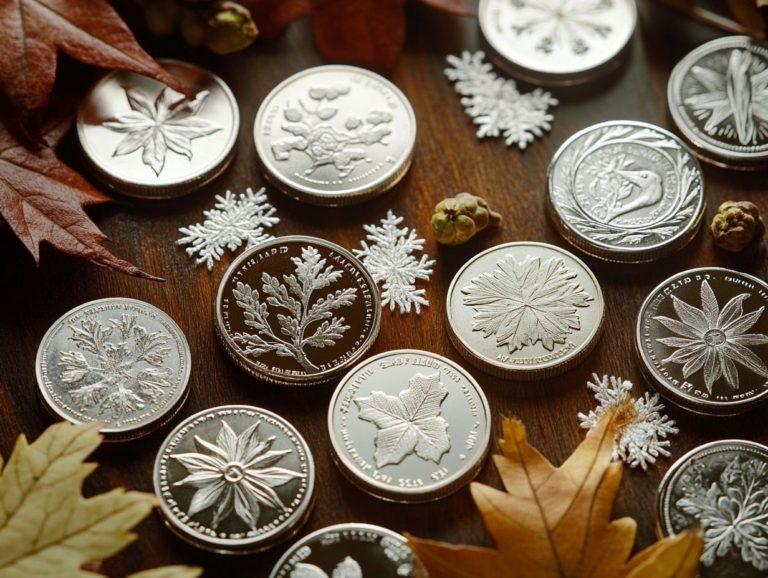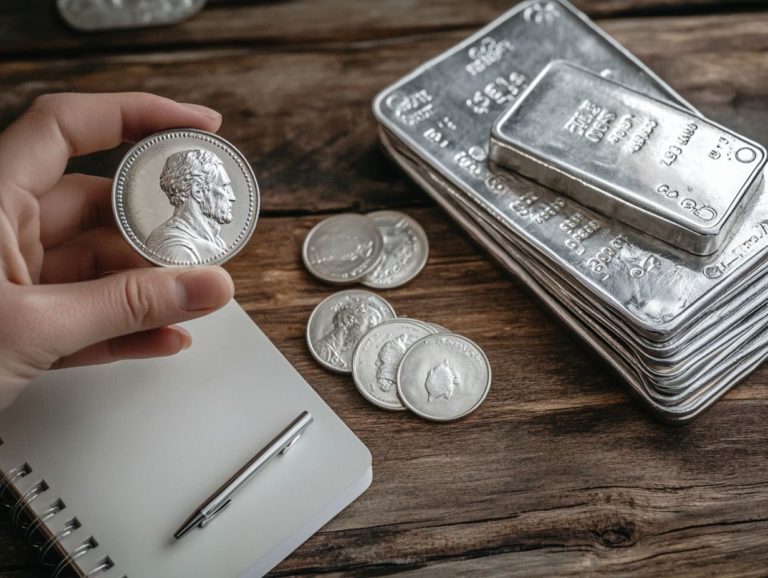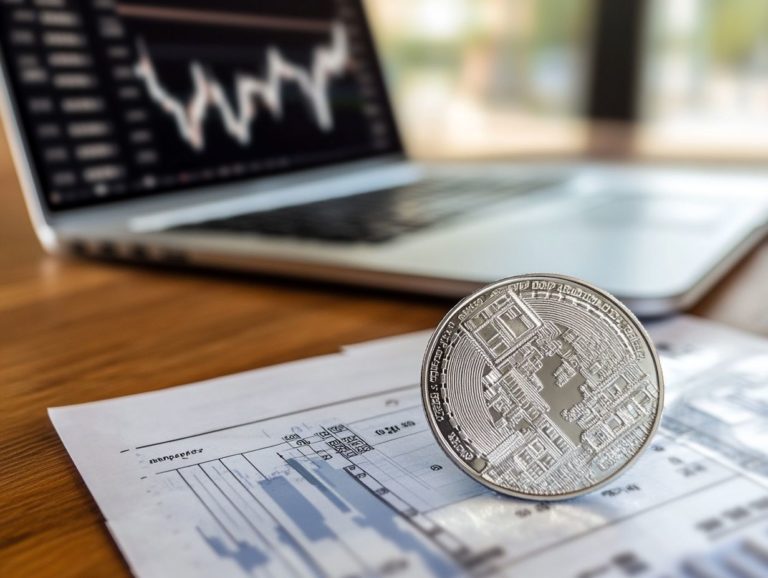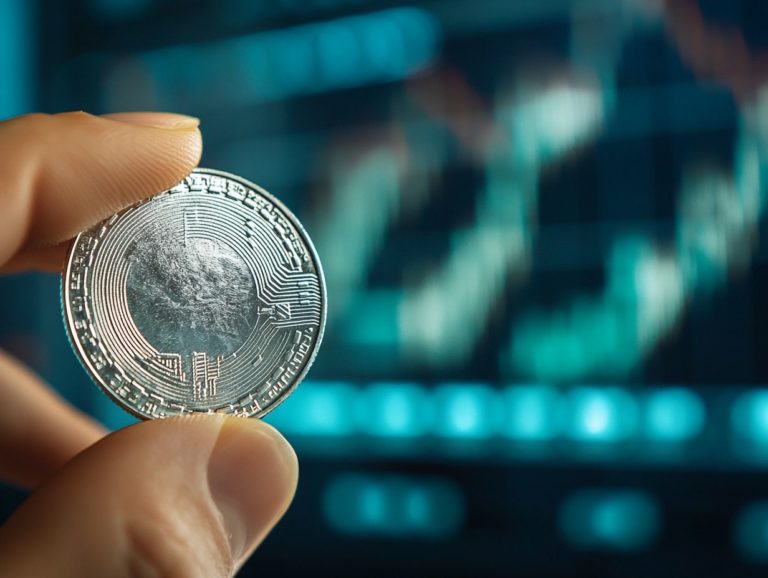How to Liquidate Your Silver Investments
Silver investments can significantly enhance your financial portfolio. Understanding when and how to liquidate them is essential for maximizing your returns.
This article delves into the diverse types of silver investments, explores the key factors that influence silver prices, and outlines the compelling reasons you might consider selling.
Learn how to liquidate your silver investments for maximum profit today! You ll discover effective liquidation methods, strategies to maximize profits, and potential challenges, such as taxes and transaction fees.
By grasping these elements, you will be empowered to make informed decisions about your silver investments.
Contents
- Key Takeaways:
- Understanding Silver Investments
- Reasons for Liquidating Silver Investments
- Methods of Selling Silver
- Maximizing Profits from Selling
- Potential Challenges and Risks
- Frequently Asked Questions
- How do I cash in on my silver investments?
- How do I determine the value of my silver investments?
- Is it better to sell my silver investments during a market high or low?
- Are there any fees or taxes associated with liquidating my silver investments?
- Can I sell a portion of my silver investments or do I have to sell all at once?
- What are some alternatives to selling my silver investments?
Key Takeaways:
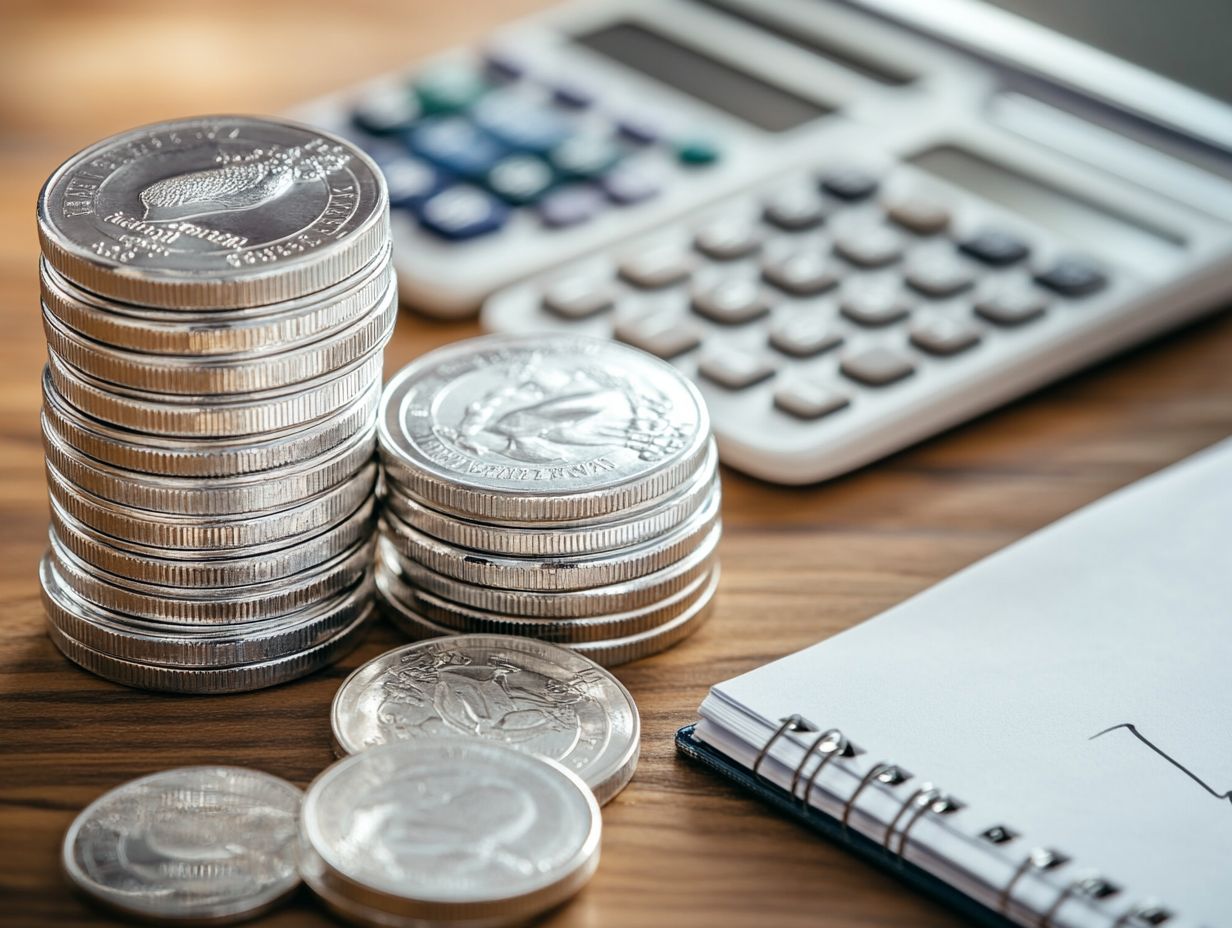
- Consider your financial goals and market trends before liquidating silver investments.
- When looking to sell silver, explore all options, such as selling to dealers or exchanging for other assets.
- To maximize profits, carefully consider timing and utilize negotiation strategies during the liquidation process.
Understanding Silver Investments
Understanding silver investments is essential if you’re aiming to diversify your portfolio and navigate today s unpredictable economic landscape with confidence.
As a precious metal, silver acts as a safeguard against inflation and provides multiple avenues for investment whether it s through coins or bullion, ETFs that hold silver, or silver mining stocks.
By diving into market conditions and assessing the liquidity of silver investments, you can seize opportunities for profits and wealth creation while effectively minimizing the risks linked with market fluctuations.
Types of Silver Investments
Various types of silver investments offer unique advantages, allowing you to capitalize on market price fluctuations.
Among the most sought-after options are physical silver coins and bullion. These tangible assets provide a sense of security that many investors find reassuring during times of economic uncertainty.
If you prefer to leverage price movements without the hassle of physical ownership, silver futures contracts could be your ticket, letting you speculate on future price trends with ease.
Exchange-Traded Funds (ETFs) like the iShares Silver Trust and the Global X Silver Miners ETF offer diversified portfolios that focus on silver and mining companies, respectively.
Each type of investment comes with its own set of risks and rewards. While physical silver provides a comforting sense of security, futures and ETFs may introduce higher volatility, making them suitable for varying investment strategies based on your individual risk tolerance and market knowledge.
Factors Affecting Silver Prices
Several factors influence silver prices, including market conditions, economic stability, and liquidity. These can fluctuate based on broader financial obligations and inflation rates.
The dynamics of supply and demand play a crucial role, with heightened industrial usage and investment interest often pushing prices upward.
Economic indicators like GDP growth, employment rates, and consumer confidence can signal shifts in market sentiment, affecting your investment decisions.
Geopolitical events, such as trade tensions or political instability, can introduce uncertainty in traditional markets. This often leads you to seek safe-haven assets like silver.
Together, these varied influences underscore the complexity of the silver market and its responsiveness to both micro and macroeconomic conditions.
Reasons for Liquidating Silver Investments
There are several compelling reasons to consider liquidating your silver investments. Factors such as evolving financial strategies, shifting market trends, and the opportunity to capitalize on inflation-driven profits all highlight the importance of regularly reassessing your portfolio.
Whether prompted by personal financial commitments or changes in market dynamics, understanding when and how to sell silver is a crucial element of astute wealth management.
Take the time to explore your options and make informed decisions today!
Financial Goals and Market Trends
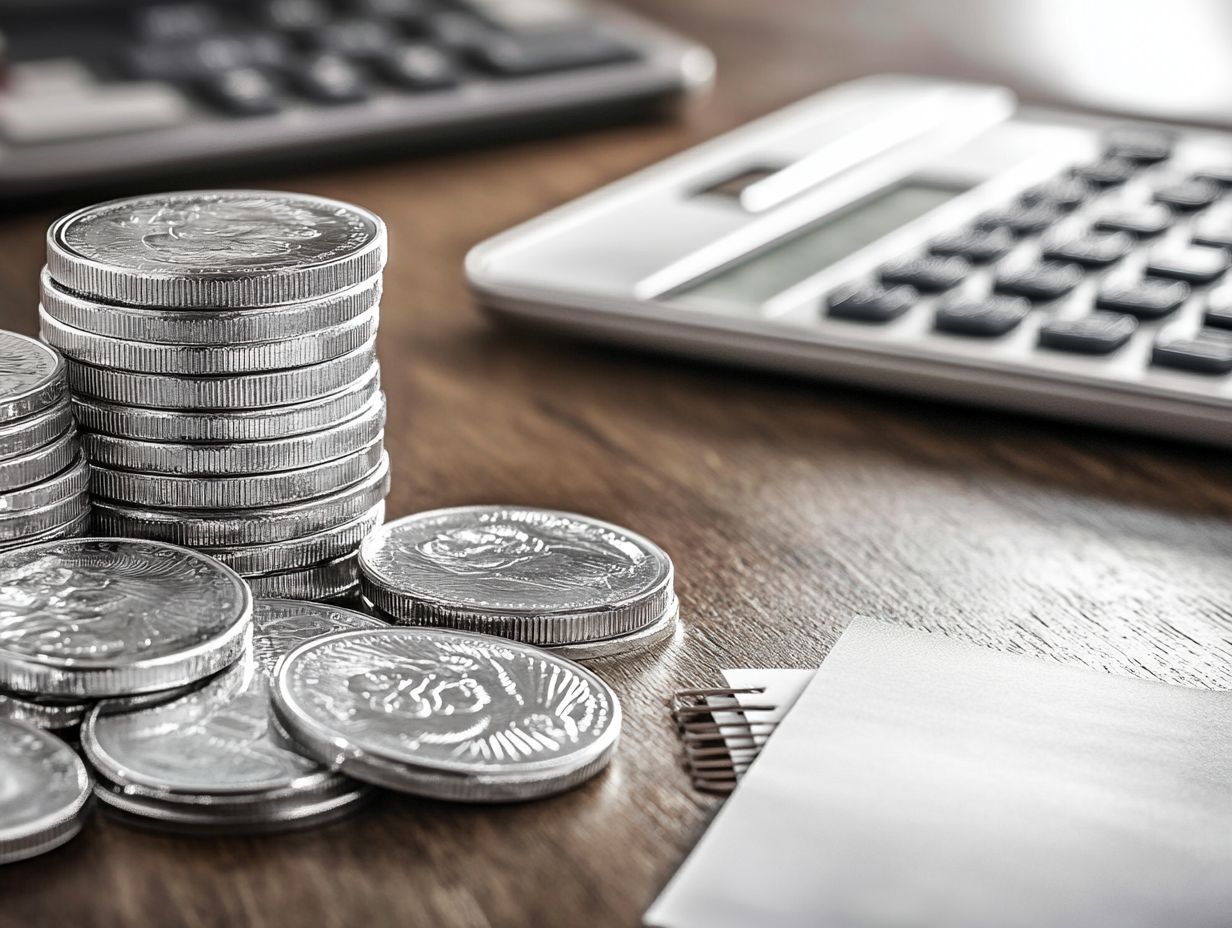
Aligning your financial goals with market trends is crucial when you re considering selling silver investments. After all, fluctuating prices can significantly impact your capital gains and your selling strategy.
Take a comprehensive view of your portfolio. Look beyond current market dynamics.
Consider future market movements. Tools like technical analysis (which examines price patterns) can help you understand market behaviors.
Setting clear targets based on your personal financial objectives will help guide your decision-making process. Whether it s seeking professional advice or conducting thorough research, equipping yourself with the right knowledge will allow you to react proactively when opportunities arise.
Create a solid plan now! It could be your key to reducing risks and maximizing returns!
Methods of Selling Silver
You can sell your silver in various ways. You may choose to sell to dealers, individuals, or even pawnshops. Each option carries its own implications for your financial decisions and impacts the accuracy of the appraisal process.
Selling to Dealers or Individuals
When you’re ready to sell silver, you have the choice of approaching either dealers or individual buyers. Both routes come with their own market price considerations and potential for capital gains.
Going the dealer route often means a more streamlined transaction. Dealers typically offer immediate payment and provide expert assessments of your silver s value, making the process convenient and efficient. On the other hand, selling to individuals might yield higher returns. You’ll have the opportunity to negotiate directly with buyers who could be willing to pay a premium for your silver.
The speed of transactions varies. Dealers provide quick cash.
Individual sales may need patience as you wait for the right buyer. This waiting game can influence market timing and ultimately affect your final selling price. By understanding these nuances, you can select the selling method that best aligns with your goals for your silver assets.
Exchanging for Other Assets
Exchanging silver for other assets can be smart. If you re interested in collectibles or precious metals, this could fit your goals.
This approach allows you to leverage the intrinsic value of silver while also diversifying your portfolio. By keeping an eye on market trends and understanding the demand for various assets, you can effectively utilize silver almost like a currency. To protect your investments, it’s important to know how to safely store your silver investments, enabling you to acquire real estate, stocks, or even rare coins.
However, it s vital to consider the potential risks, such as market volatility and the fluctuating prices of silver, alongside the possible rewards. By clearly defining your financial goals and weaving this strategy into your investment planning, you can adeptly navigate the complexities of asset exchange while optimizing your returns.
Maximizing Profits from Selling
Maximizing profits from your silver investments during selling depends on your understanding of market dynamics. By employing astute timing and refined negotiation strategies, you can secure the most advantageous returns possible.
Start assessing your silver investments today!
Timing and Negotiation Strategies
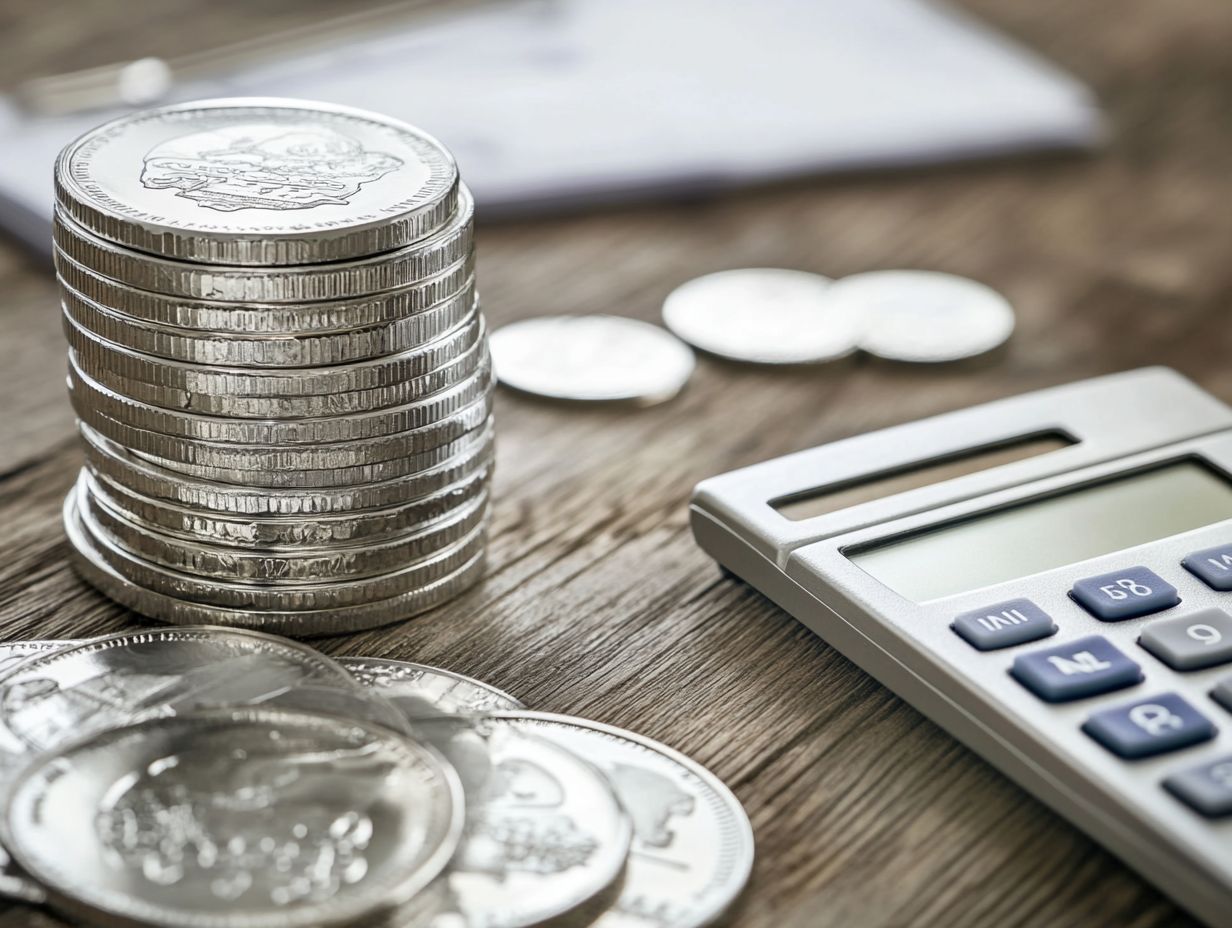
Effective timing and negotiation strategies are crucial for maximizing your profits when selling silver, as they can significantly impact market prices and potential capital gains.
Understanding the intricacies of market changes will provide you with a solid foundation for making informed choices. By analyzing historical price trends and seasonal variations, you can identify the perfect moments to sell, ensuring that you capitalize on high-demand periods.
Employing smart negotiation tactics can elevate your return rates. By understanding the buyer’s motivations and leveraging your own insights about silver’s current valuation, you can create a favorable bargaining environment.
Integrating a thoughtful approach to timing with adept negotiation skills can significantly enhance your financial outcomes in the silver market.
Potential Challenges and Risks
Investing in silver can be exciting and profitable, but it also presents a set of challenges and risks that you must navigate with care.
Watch out for taxes and transaction fees that can eat into your profits. Staying aware of market changes is key to your selling strategy.
Taxes and Transaction Fees
When selling silver, it s essential to grasp the implications of taxes and transaction fees, as these elements can significantly influence your financial decisions and net profits.
Many investors often underestimate the considerable impact that capital gains taxes and brokerage fees can have on their returns. Depending on your holding period and local regulations, capital gains taxes could take a hefty slice out of your realized profits. Transaction fees also apply and can reduce your profits.
To navigate these complexities with finesse, it s wise to maintain meticulous records of your transactions, consult with financial advisors, and explore tax-efficient selling strategies.
Implementing techniques such as offsetting gains with losses or utilizing retirement accounts may assist you in minimizing these costs while ensuring compliance with tax laws.
Frequently Asked Questions
How do I cash in on my silver investments?
The process for liquidating your silver investments varies depending on how you have invested in silver. If you have invested in physical silver, you will need to find a reputable dealer who can purchase your silver. If you have invested in silver stocks or ETFs, you will need to sell them through your brokerage account.
How do I determine the value of my silver investments?
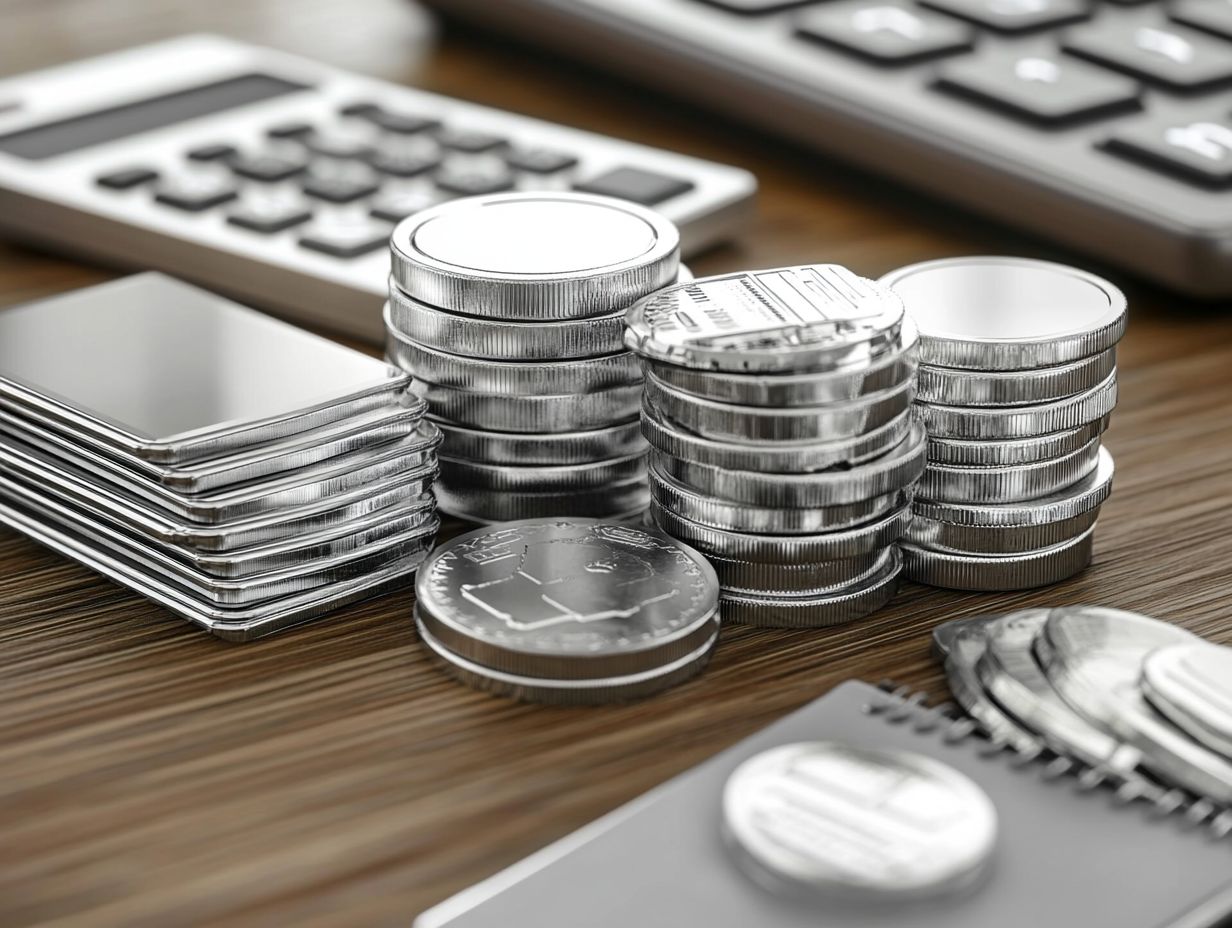
The value of your silver investments depends on the current market price of silver. You can track this by checking the spot price of silver online or using an app. Alternatively, a dealer or broker can also provide you with the current value of your silver investments.
Is it better to sell my silver investments during a market high or low?
It is generally recommended to sell your silver investments during a market high to maximize your profits. However, predicting market highs and lows can be challenging, so regularly monitoring the market and considering your personal financial goals is important before deciding to sell. Act quickly to maximize your profits!
Are there any fees or taxes associated with liquidating my silver investments?
There may be fees associated with selling your silver investments, such as transaction fees or commissions. You may also be subject to capital gains taxes on any profits made from selling your silver investments. It is important to consult with a financial advisor or tax professional to understand the potential fees and taxes associated with liquidating your silver investments.
Can I sell a portion of my silver investments or do I have to sell all at once?
It is possible to sell a portion of your silver investments rather than selling all at once. This can be a good option if you only need to liquidate a certain amount for financial reasons or if you want to maintain some silver investments for the long term.
What are some alternatives to selling my silver investments?
If you’re not ready to sell all your silver, consider using it as collateral for a loan. Collateral means you can borrow money by offering something valuable, like your silver.
You can also keep your silver as a collectible or wait for its value to increase in the future. These options can help you make the most of your investment while keeping your assets secure.










